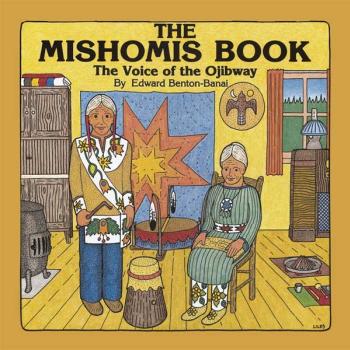The University of Minnesota Press published The Mishomis Book by Edward Benton-Banai for young readers. It "documents the history, traditions, and culture of the Ojibway people through stories passed down through generations."
Native American Religious Teachings
The Great Flood
Religious teachings, passed down orally and in writing, provide important ways for many people to understand their place in the cosmos and to instill meaning in their individual and collective lives. That is no different for the many Native American groups who, like their European counterparts, sought to explain natural and supernatural phenomena through sacred stories. One oral tradition, common among diverse Great Lake regions tribes, tells the story of a great flood whereby the Creator sought to purify and remake human society.
The Story Remembered
As retold by Native American civil rights leader Eddie Benton Banai (Ojibwe) in the Mishomis Book, “Men and Women did not continue to give each other the respect needed to keep the Sacred Hoop of marriage strong. Families began quarreling with each other. Finally villages began arguing back and forth. People began to fight over hunting grounds. Brothers turned against brother and began killing each other.”
“When it seemed that there was no hope left,” the Creator “decided to purify the Earth. He would do this with water. The water came like a mush-ko-be-wun' (flood) upon the Earth(aki). The flood came so fast that it caught the entire Creation off guard. Most all living things were drowned immediately, but some of the animals were able to keep swimming, trying to find a small bit of land on which to rest. Some of the birds were caught in the air and had to keep flying in order to stay alive. The purification of the Earth with water appeared to be complete. All the evil that had builtup in the hearts of the first people had been washed away....”
A spirit being named "Waynaboozhoo" survived the flood along with many animals by clinging to a log. (In some traditions they cling to a canoe or turtle’s back.) Waynaboozhoo had “made mistakes at times just like we did. But he also learned from his mistakes so that he could accomplish things and become better at living in harmony with the Earth.” A muskrat eventually sacrificed his life to collect a piece of the earth at the bottom of the sea, which when placed on the back of a turtle and aided by the winds grew into a huge island, upon which life could again grow and thrive.
An Enduring Legacy
The Great Flood story, in various iterations, remains an important part of traditional belief and understanding for many indigenous groups in Canada and the United States. For many, “Turtle Island” remains a way of referring to North America and an important reference point in Native American education and political activism.

